Welcome to Animals and Wildlife in Texas. Texas consists of more than 800 different types of habitats, and it also includes 540 species of birds and 142 species of amphibians, mammals, and other animals.

Click below to jump to a section on animals in Texas:
Coyote
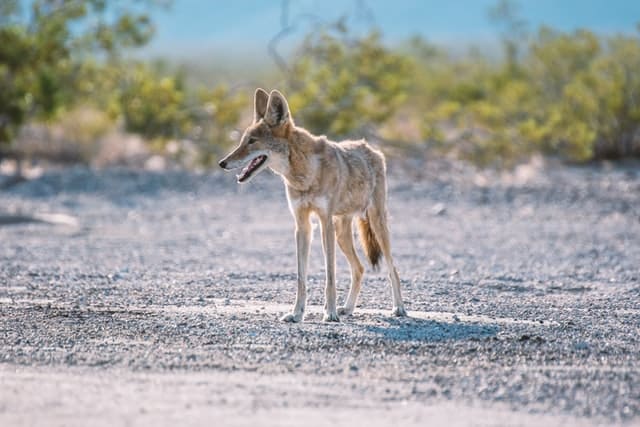
Coyote belongs to North America and is a species of canine. It is smaller in size than its relative wolf. It was referred to as ‘American jack’ by a behavioral ecologist, and some other historical coyote names include brush wolf and prairie wolf. It is widely distributed and abundant throughout North America. It is also found that it is increasing its range to urban areas in the United States and Canada.
There are 19 recognized subspecies of coyote. Male coyotes weigh between 8 to 20 kg, and females weigh between 7 to 18 kg. Their fur is a light greyish color. Coyotes are generally carnivorous, so their diet includes rabbits, hares, rodents, reptiles, amphibians, invertebrates, fish and deer. However, they have been known to supplement their diet with fruits and vegetables.
Coyotes have been known to cross-breed with local wolves, producing hybrids known as coy-wolves. Their mating season occurs between January and March. Female coyotes have between four to seven pups per litter after a gestation period of 58 to 65 days. They tend to create their dens in nearby caves which allow the parent coyote to easily protect their young from predators. The young coyotes are born blind and emerge from their dens after about two or three weeks, and both parents feed and care for their young.
Coyotes are territorial animals. They mark their territories with feces, urine and vocalizations. These territories have a range of 10-40 squared kilometers. Coyotes tend to live for approximately 21 years, and their biggest threat is human poaching for fur, being killed by farmers, and infectious diseases such as rabies and canine distemper.
Where can one find Coyotes in Texas?
Due to their generalist diets and ability to adapt, coyotes can be easily found in urban and wild landscapes as long as food is present.
Pronghorn
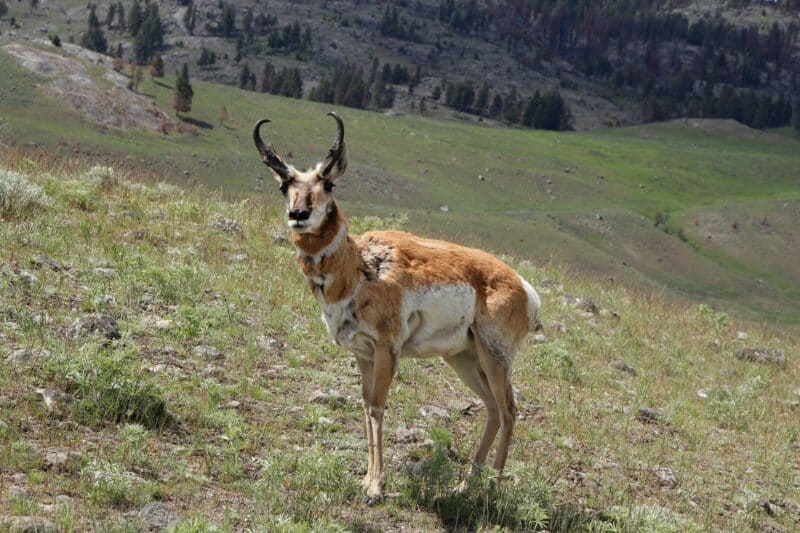
The pronghorn, also known as the American antelope, is unique in the animal kingdom as it is the only species with branched horns that it sheds annually. These animals are commonly found in open plains and semi-deserts. They are characterized by a reddish-brown and white coat, with two white bands around the throat area, a dark brown mane, and white underparts. Their rump patches can be erected suddenly, serving as a warning signal of danger to other pronghorns.
In terms of size, male pronghorns typically weigh around 40 kg, while females are slightly lighter, weighing less than 40 kg. Standing, pronghorns measure about 80 to 100 cm in length. Known for their speed, they can run at approximately 70 km per hour, making them faster than many other antelope species.
Pronghorns have exceptionally large eyes, comparable in size to those of elephants, which grants them powerful vision. This enables them to quickly spot predators from distances up to 1 km away. Notably, both male and female pronghorns possess horns, a feature that distinguishes them from many other ungulate species.
Male pronghorns boast significantly larger horns with more extensive branching. Among these, the longer prong curves backward while the shorter prong faces forwards. Bucks shed their horns in October, following the mating season’s conclusion. Pronghorns also experience a brief mating season towards the end of summer and fall, during which they rely on summer vegetation to replenish the energy expended during mating activities.
The gestation period for pronghorns is notably long, approximately 250 days. It is common for female pronghorns to give birth to twins, as they often implant half a dozen or more embryos. This reproductive strategy contributes to the species’ survival and growth.
Where can one find Pronghorns in Texas?
The pronghorn is typically found in Texas, predominantly in the Trans-Pecos deserts and the high plains of the Panhandle. This animal is distinctive in various aspects. Notably, Marfa and Fort Davis are regarded as some of the best locations to observe pronghorns in Texas, offering unique opportunities to witness this remarkable species in its natural habitat.
Cougar
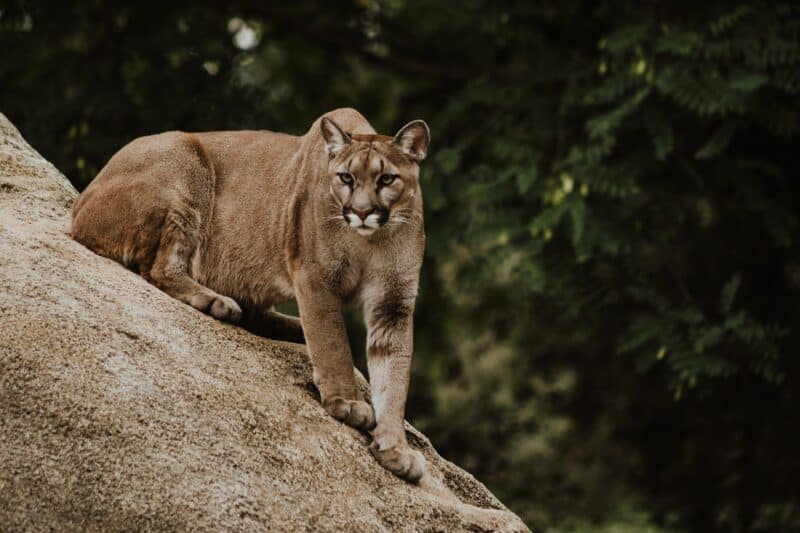
The cougar, scientifically known as Puma concolor, is a large cat native to the Americas. It boasts the widest range of any large mammal in the Western Hemisphere, stretching from the Canadian Yukon to the southern Andes of South America. This adaptability has earned it various names like mountain lion, puma, catamount, painter, and panther, depending on the region.
Ranking second in size only to the jaguar in the Americas, the cougar leads a secretive and mostly solitary life. It is active mostly at night and during twilight, although it’s not unusual to spot one during the day. Interestingly, despite its large size, the cougar is more genetically akin to smaller cats, including the domestic cat, than to the larger members of the Pantherinae subfamily.
As a skilled predator, the cougar has a diverse diet, hunting various prey across its extensive habitat.
The primary food sources are ungulates, especially deer, but they also hunt insects and rodents. It prefers nesting in areas with a low brush and rocky areas to follow but also lives in open spaces. The cougar is local and lives in densely populated areas. The size of each home depends on the location, the vegetation, and the number of predators. Although large, it is not always a predator that kills itself in cages; American black bears, grizzly bears, herds of wolves or coyotes, and Florida to American alligators. It is uninhabited and very protective of people.
The cougar, a notable member of the Felidae family, holds a unique position in North America’s wildlife. As human populations expand into their territories and establish farms, encounters leading to deadly attacks, though still rare, are on the rise. The Eastern cougar, in particular, was deemed one of the most endangered species in early 20th-century eastern North America, aside from the Florida panther subpopulation.
Physically, cougars are distinguished by their round heads and erect ears. Their formidable forearms, necks, and jaws are essential for grasping and subduing large prey. Each hind leg has four retractable claws, while their forepaws boast five, including a dewclaw, enhancing their ability to capture prey.
Cougars are slender and agile creatures. Adult males typically measure about 2.4 meters from nose to tail, while females average around 2.05 meters. Males usually weigh between 53 to 100 kilograms. In contrast, females generally weigh between 29 and 64 kilograms. Interestingly, cougar size varies geographically, being smaller near the equator and larger towards the poles. The largest recorded cougar, shot in 1901, weighed 105.2 kilograms. There have been claims of even larger specimens, but these are possibly exaggerated.
Where can one find Cougars in Texas?
The coat of the cougar is typically tawny, but it can also appear in shades of silvery grey or red, with lighter spots on the underside, including the jaw, chin, and throat. Cougar cubs are born with blue eyes and ringed tails. They have a paler coat with dark spots on their sides that remain as they grow.
In a rare sighting at Serra National Park in Rio de Janeiro in 2013, a leucistic cougar, an extremely rare variation within animal species, was captured on camera. This individual displayed a white coat, highlighting the species’ genetic diversity.
Cougar anatomy is noteworthy for its large paws and powerful hind legs, among the largest in the Felidae family. These adaptations enable the cougar to make high jumps and achieve rapid speeds over short distances. Impressively, a cougar can leap to a height of up to 5.5 meters (18 feet), often using this ability to ascend trees.
Alligator
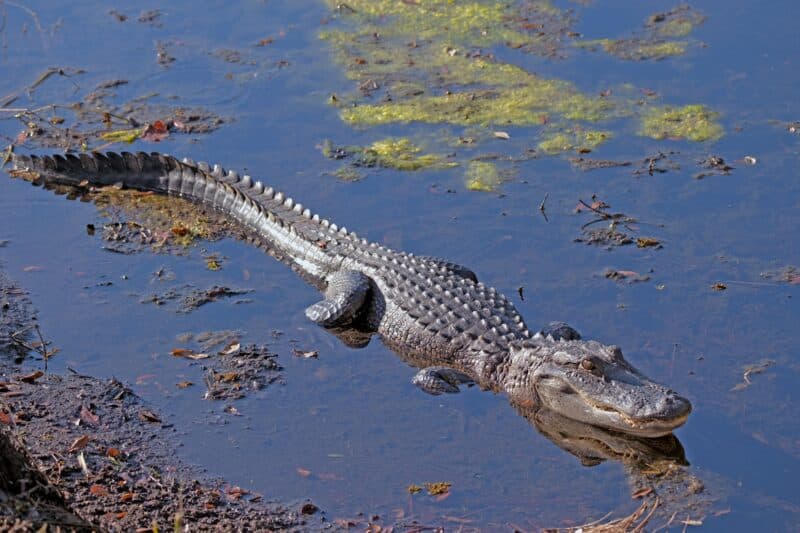
The alligator belongs to the Alligator genus within the Alligatoridae family. There are two existing species: the American alligator and the Chinese alligator. Additionally, several extinct alligator species are known from fossil records. Alligators first appeared during the Oligocene epoch, around 37 million years ago.
Large male alligators tend to be solitary, while smaller ones are often found in groups. In terms of territory, larger alligators (both males and females) defend primary areas, while smaller ones are more tolerant of others of similar size. Alligators move in two distinct ways: “sprawl” and “high-walk.” The sprawl is a low movement with the abdomen touching the ground, used for quick transitions to high speed or sliding over wet surfaces. The high-walk raises the abdomen off the ground, using the legs to move more effectively on land.
Despite their heavy bodies and slower metabolism, alligators can move quickly in short bursts. They hunt small animals, which they can kill and eat in one bite, and can overpower larger prey by dragging them into the water to drown. Alligators feed by biting and either letting their food rot or performing a “death roll” – a violent twisting or shaking motion that tears off bite-sized pieces.
The death roll requires the tail to bend at a critical angle relative to the body; an alligator cannot perform this action with a motionless tail. Their jaw muscles are strong for capturing prey, but weak in opening; hence, a few wraps of duct tape can prevent a captured alligator from opening its jaws.
Generally, alligators are wary of humans and tend to walk or swim away when approached. However, feeding wild alligators can diminish this fear, leading them to associate humans with food, which is illegal and dangerous in places like Florida.
Where can one find Alligators in Texas?
In Texas, American alligators are found from the Sabine River in East Texas, across the Gulf Coastal Plains, to the Rio Grande, and as far west as Interstate 35. There are about 120 areas in Texas where they are prevalent, with the highest concentrations along the Gulf Coastal Plains.
Fox Squirrel
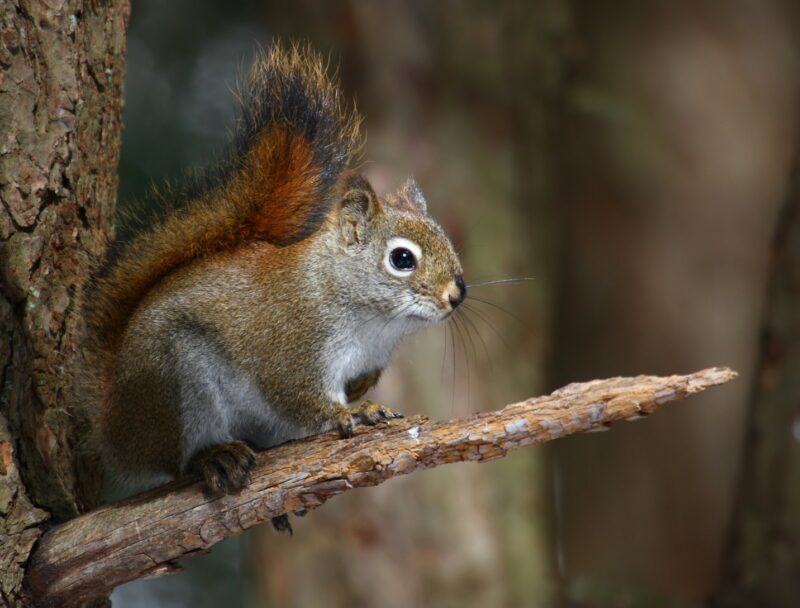
Fox squirrels are large tree-dwelling squirrels, known for their adaptability to various forest habitats, making them the most common squirrel species in Texas. They thrive particularly in open forests rich in oak and nut trees. These squirrels are usually active early in the morning and later in the afternoon.
Fox squirrels make their homes in tree hollows or construct leafy nests on branches. Their diet is diverse, including acorns, nuts, leaves, fruits, fungi, insects, aquatic animals, and tree bark. They are known for burying nuts to store as winter food, relying on their keen sense of smell to relocate them. In doing so, squirrels inadvertently play a crucial role in planting a variety of nut trees. One squirrel can bury several thousand pecans in just three months.
The long tail of a fox squirrel serves multiple purposes. It can wrap around the face for warmth, aid in balance while running across tree branches, and even act like a parachute in case of a fall. Observing the movements of a squirrel’s tail can offer insights into its mood; rapid tail wagging usually indicates nervousness or agitation.
Fox squirrels breed mainly in January, February, May, and June. Their young are born naked, blind, and helpless but become independent in just three months. These squirrels can live up to 15 years.
Where can one find Fox Squirrels in Texas?
In Texas, fox squirrels are typically found in dense woodlands that produce nuts. They inhabit forests, riverbanks, and streams in the eastern two-thirds of Texas and in other parts of the eastern United States. Fox squirrels are also a popular game animal in Texas and several other states.
Effective forest management practices can support fox squirrel populations. This includes preserving old nut-producing trees for food and shelter, as well as creating tree tunnels through open woodlands to provide safe access to food and mates for these squirrels.
Summary Animals and Wildlife in Texas
Texas, ranking as the second-largest state in the U.S., offers a dynamic and rich environment for studying various mammal habitats. Its diverse landscapes range from the swampy Piney Woods in the east to the rugged terrain of the Hill Country and the expansive deserts in the south and west. Each area provides a distinct habitat for wildlife. The grass-covered Panhandle in the north and significant rivers like the Rio Grande further contribute to this ecological variety.
Texas serves as a meeting point for species from the east and west of the continent and also hosts animals commonly found in Mexico and Central America. This unique convergence of different terrains and wildlife creates a microcosm of North American biodiversity, making Texas an exceptional place for ecological study and appreciation.
If you enjoyed reading about animals in Texas, check out animals in Tennessee and South Carolina next!
- Top 10 Cutest Fish in the World - April 15, 2024
- 10 Most Endangered Animals - April 15, 2024
- 16 Top Predators in the Food Chain - April 12, 2024




